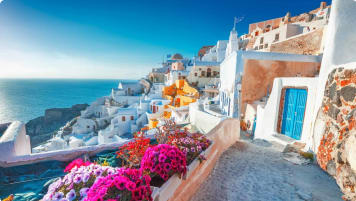The History of Mykonos
Mykonos has an amazing history, rising and falling as an economic powerhouse and trade centre dominated and defended by various rulers.
2 Mar 20 · 5 mins read
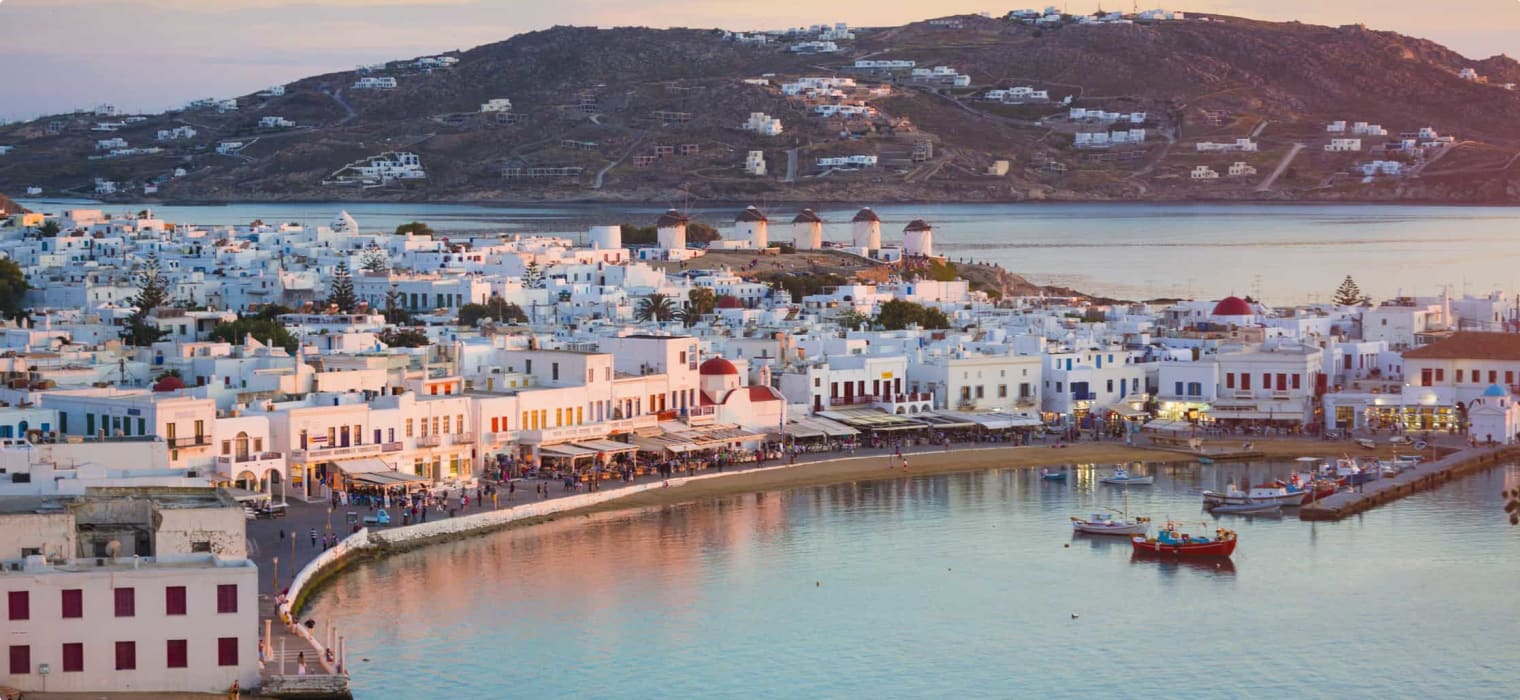
A Historical Tour of Mykonos
The Greek island of Mykonos is one of the most popular paradise holiday destinations of the Cyclades islands in the Aegean Sea. Tourists are attracted to its beautiful coast, gorgeous beaches of golden sand, vibrant sophisticated nightlife, traditional Greek cuisine, and historical archaeological sites and architecture. The later reveal its amazing history, rising and falling as an economic powerhouse and trade centre dominated and defended by various rulers. This article explores the history of this paradise Greek island to assist you in your Mykonos holiday.
Odyssey Traveller conducts a tour of Mykonos as part of our Greece small Group escorted history private tour. Our guided tour designed for senior and mature-aged travellers begins and ends in Athens, exploring the wonders of the Ancient World along the way. Arriving by ferry to the island, our Mykonos itinerary includes an exploration of the dazzling white alleys and cobbled streets of the Mykonos old town, a stroll through Little Venice with its arcade Venetian houses built on the water’s edge, visits to the island‘s historic sites and archaeological museum to learn about its history, an excursion day trip by boat to UNESCO World Heritage Listed Delos, with its famous Lion Terrace, and of course time to relax at the Mykonos beaches (our key suggestions include Super Paradise Beach, Ornos Beach, Agios Sostis, Agios Stefanos, Agios Ioannis, Agrari Beach and Platis Gialos beach).

Mythology & Ancient Times
In ancient Greek Mythology the location is said to have been that of a great battle between Zeus and the Titans and where Heracles slew the Giants. It is said that the huge rocks of Mykonos Island are the petrified corpses of the Giants. The island was then later named after the local mythical hero Mykons, worshipped as the grandson of the god Apollo.
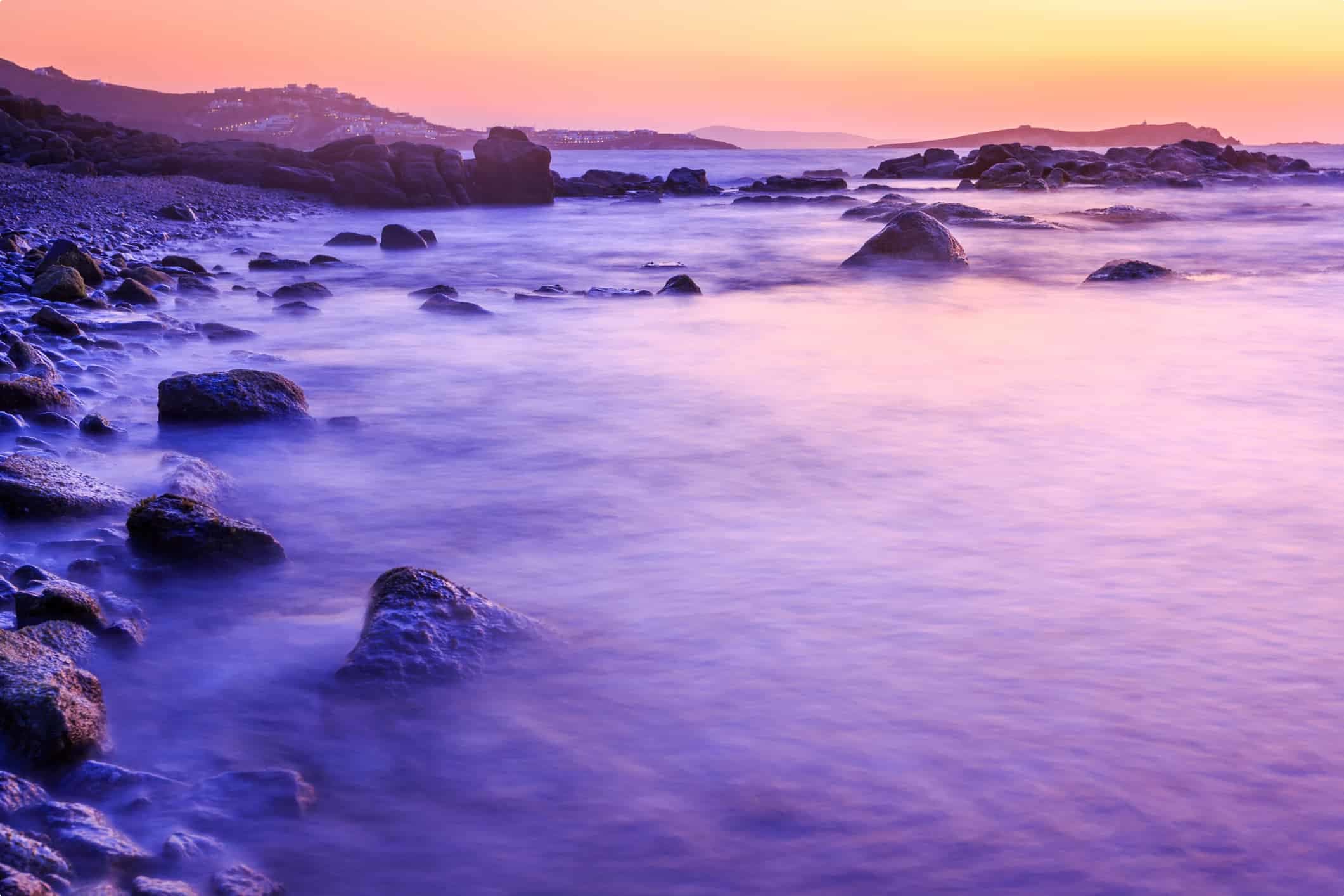
Archaeological excavations have revealed the first inhabitants of the island were Carians, followed next by the Ionians in the early 11th century BCE settling at present day Chora.
Due to its location, Mykonos became an important place for supplies and transit under various rulers including the Phoenicians, Athenians, Macedonians, and Romans, later developing into a commercial hub of agriculture and maritime trade. Its prosperity came due to the economic boom of its neighbour Delos Island – the highly populated religious centre of the antiquity and premier trade centre of Greece.

Medieval Period
With the gradual and permanent decline of sacred island Delos into an uninhabited island following multiple sackings in the 1st century BCE, Mykonos followed suit fading into obscurity into the middle ages. During this period, it remained occupied by different people including the Byznatines, Catalans, and Venetians.
Yet the island remained a favourite for pirates plundering across the Aegean Sea. As such the Byzantines built the whole Mykonos town like a maze to disorientate attackers and protect the people of Mykonos. The Venetians added to the defence by building the grand Gyzi castle in the 13th century allowing them to dominate and defend the island for over 200 years.
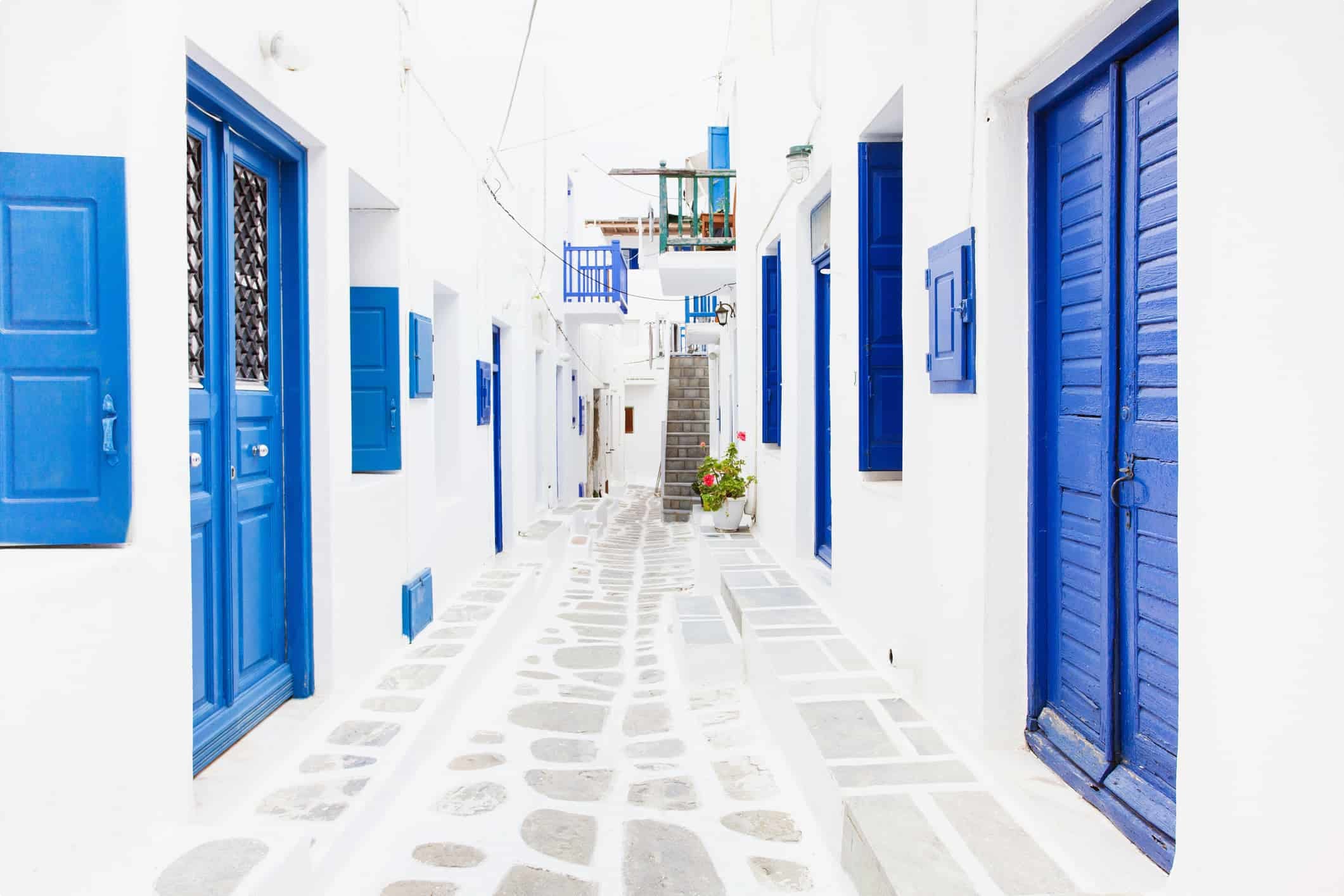
Ottoman Occupation
In 1537 The Ottomans, under the notorious admiral Barbarossa of Suleiman the Magnificent, broke the Venetian defence and an Ottoman fleet occupied the island. Under the ruler of the Ottoman fleet, Kapudan Pasha, a system of self-governance was imposed comprising a governor and an appointed council of syndics who strived to maintain fair relationships between the Turks and Venetians on the island.
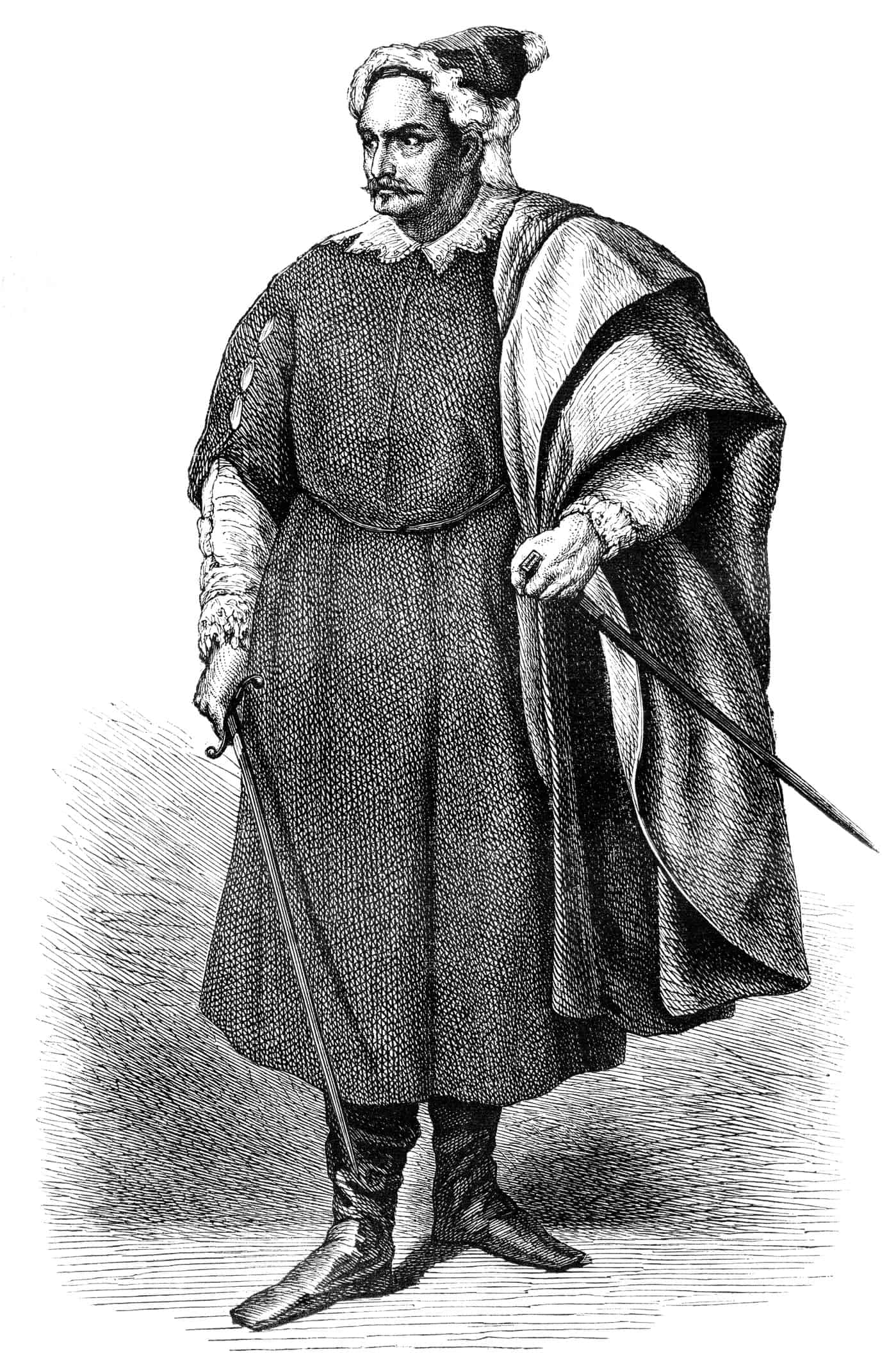
A brief Russian rule after the “Orloff Insurrection” (1770-1774) established trading ties with the Russian Empire, which continued with profitable treaties after the Ottomans reclaimed Mykonos. Prosperity returned to the island as Mykonos once again rose to the heights of its glory days as a trading centre and important stop for the resupply of foreign merchant ships crossing the sea.
Greek Revolution
The Mykonians played an active role in the Greek Revolution against the Ottomans in 1821 under the strong leadership of national heroine, Manto Mavrogenous. A well-educated aristocrat, guided by Enlightenment ideals, she sacrificed her family’s fortune to support the Greek cause, funding the maintenance of two fully equipped ships used in the revolution. In 1822 she rallied the people and the ships successfully repelled a Turkish fleet.

Modern Times
Greek finally became an independent state in 1830 but the economy of Mykonos had been completely destroyed during the revolution. Due to sailing and merchant activities the economy quickly recovered, only to again decline from the late 19th century and especially after the opening of the Corinth Canal in 1904 and World War I causing many Mykonos to emigrate for work elsewhere.
However, tourism would bring Mykonos back to life. The French Archaeological School began excavations in Delos in 1873 leading to very interesting findings attracting lovers of Greek history and mythology to the region. By the 1930s Mykonos had become a popular location for famous artists, politicians and wealthy Europeans enjoying a luxury holiday with swims at Mykonos beaches, drinks at a beach bar and delicious Greek food at one of the many restaurants on this beautiful island.

Temporarily suspended during World War II, by the mid 1950’s the island’s popularity again skyrocketed becoming the famous holiday destination that it remains today. With its unique architecture, secluded nature, turquoise waters, white beautiful beaches, and vibrant bars, beach club and beach parties, Mykonos remains a favourite among travellers from around the world.
Mykonos Tour
You can visit the Cycladic island of Mykonos as part of Odyssey’s Greece small group escorted history tour. On this fully escorted guided tour, we follow an itinerary that visits various destinations in Greece with our Program Leader and tour guide and wonder at what remains of its ancient civilisation whilst exploring its ancient ruins, monuments, and natural beauty. On our excursions, we will also sample the best of Greek cuisine.
Odyssey Traveller has been serving global travellers since 1983 with educational tours of the history, culture, and architecture of our destinations. Tours are cost inclusive of all entrances, tipping and majority of meals. For more information, click here, and head to this page to make a booking.
Articles on Greece published by Odyssey Traveller.
- Questions About Greece
- Dawn of Greek Civilisation
- Exploring Ancient Cities
- Dawn of Greek Civilisation
- Greek Islands & Cyprus
- Bronze Age Civilisations of the Eastern Mediterranean Islands
- Creating Athens
- History of Santorini
External articles to assist you on your visit to Greece.
Related Tours
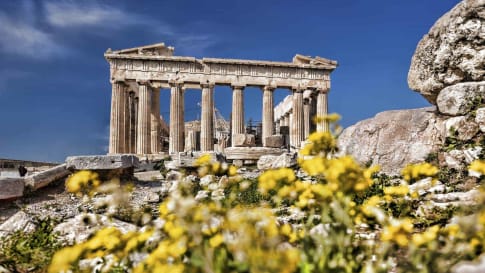
22 days
Apr, Sep, MayGreece small group escorted history tour
Visiting Greece
Our 22 day small group tour explores the land of great philosophers, myths, and legends. We will learn about the culture and heritage of modern Greece whilst exploring and learning Athens, which only found independence in its uprising from the Ottoman Empire in the 19th century.
From A$14,145 AUD
View Tour
18 days
Mar, NovWalking in Greece
Visiting Greece
Visits to UNESCO World Heritage Sites introduced by local guides feature on this walking tour for mature couple and single travellers. The days itineraries to selected destinations provide authentic experiences in the remote parts of Greece. A single supplement is charged for solo travelers on these small group journeys.
From A$11,715 AUD
View Tour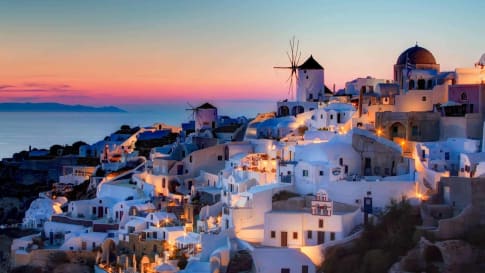
21 days
Apr, OctSantorini, Crete and Cyprus Small Group Tour | Eastern Mediterranean Islands Tour
Visiting Cyprus, Greece
A fascinating small group tour, with an amazing mix of culture and history – the islands of Greece, the cradle of Western civilisation, where traces of a centuries-old history exists. Visit Santorini, a remnant of a volcanic era; Crete, the home of the Minoan civilisation with important archaeological finds at Knossos and Phaistos. Rhodes, inhabited since the Stone Age; and venture further to the island of Cyprus, where east meets west.
From A$17,545 AUD
View Tour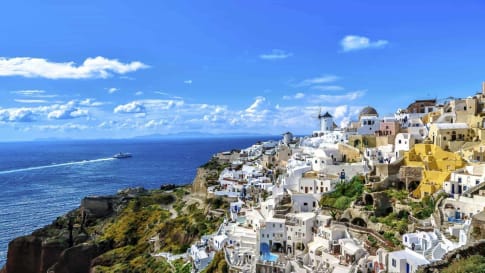
10 days
Apr, Oct, MarSantorini - Crete: Eastern-Mediterranean Islands Short tour
Visiting Greece
Join our small group short tour of the Eastern Mediterranean. Spend 10 days in Greece for a glimpse of the land of great philosophers, myths, and legends. We will learn about the culture and heritage of modern Greece while travelling from Athens to Santorini and over to Crete.
From A$9,375 AUD
View Tour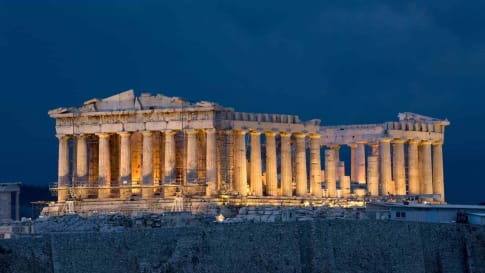
days
JanUncovering Ancient Greece | Summer School course
Visiting Tasmania
The Glory of Greece course examines the history of the Ancient Greeks from Mycenaean, Minoan and Homeric times until the commencement of the Peloponnesian War in 431BC. We discover the development of a classical, ancient people and culture.

